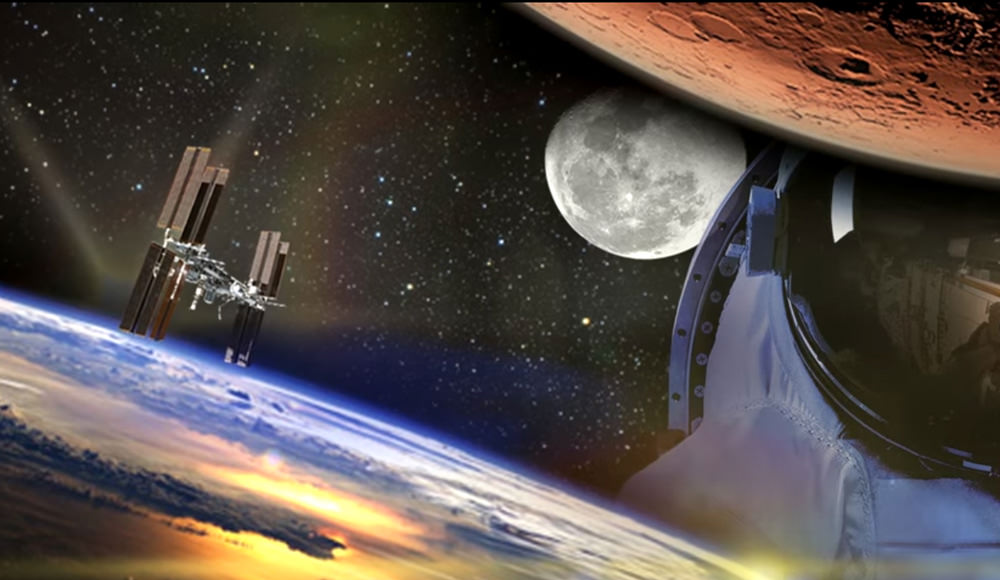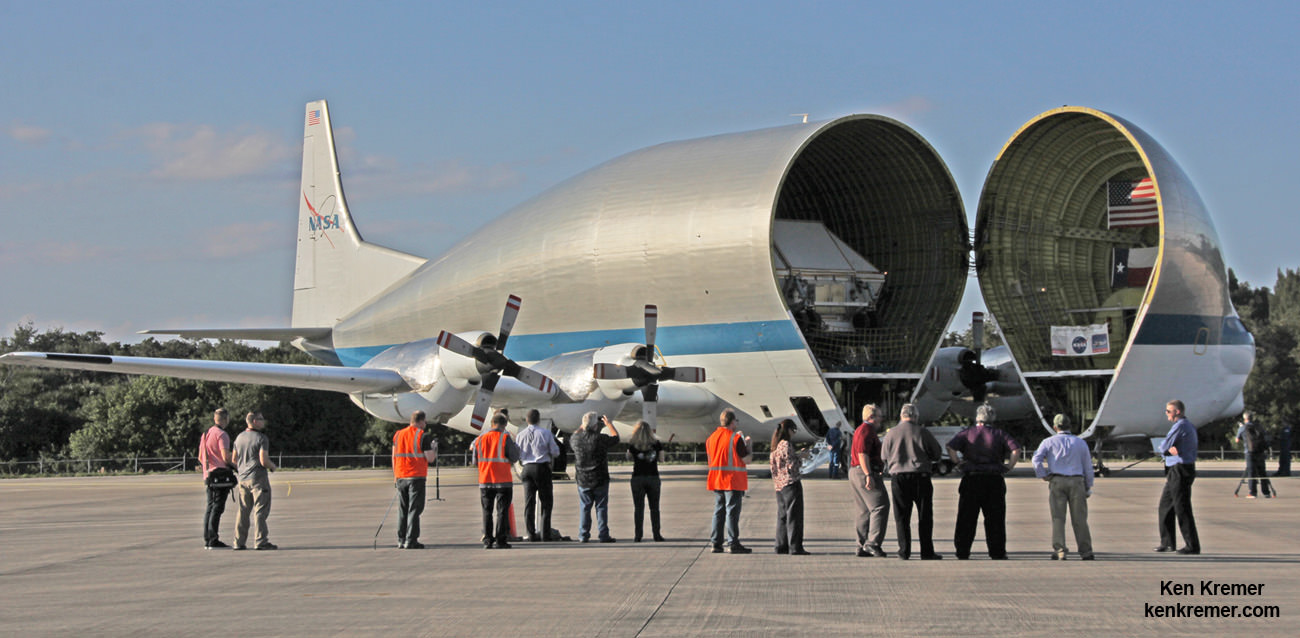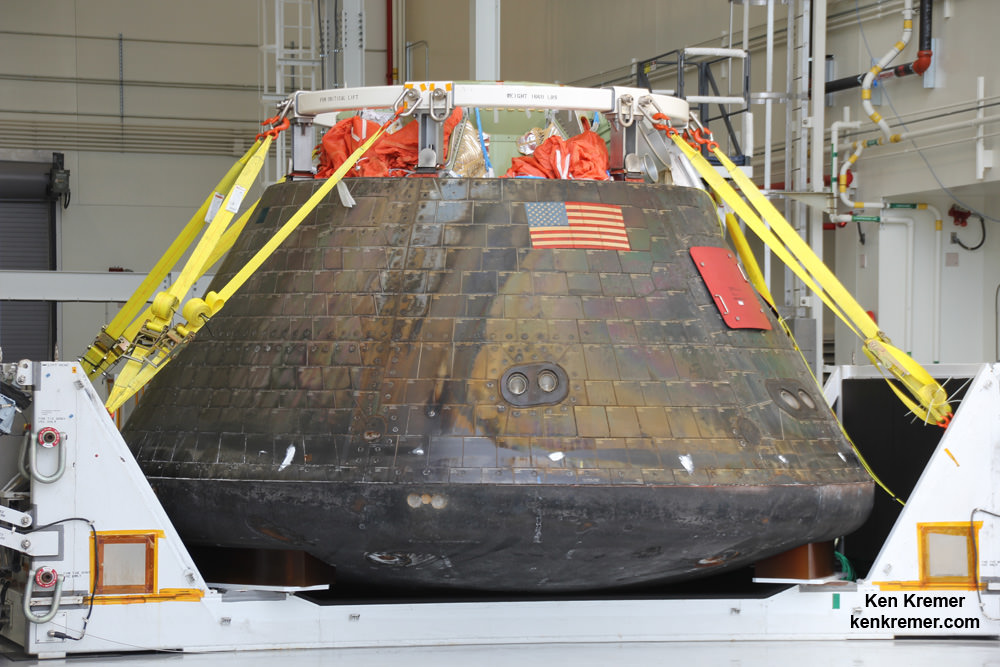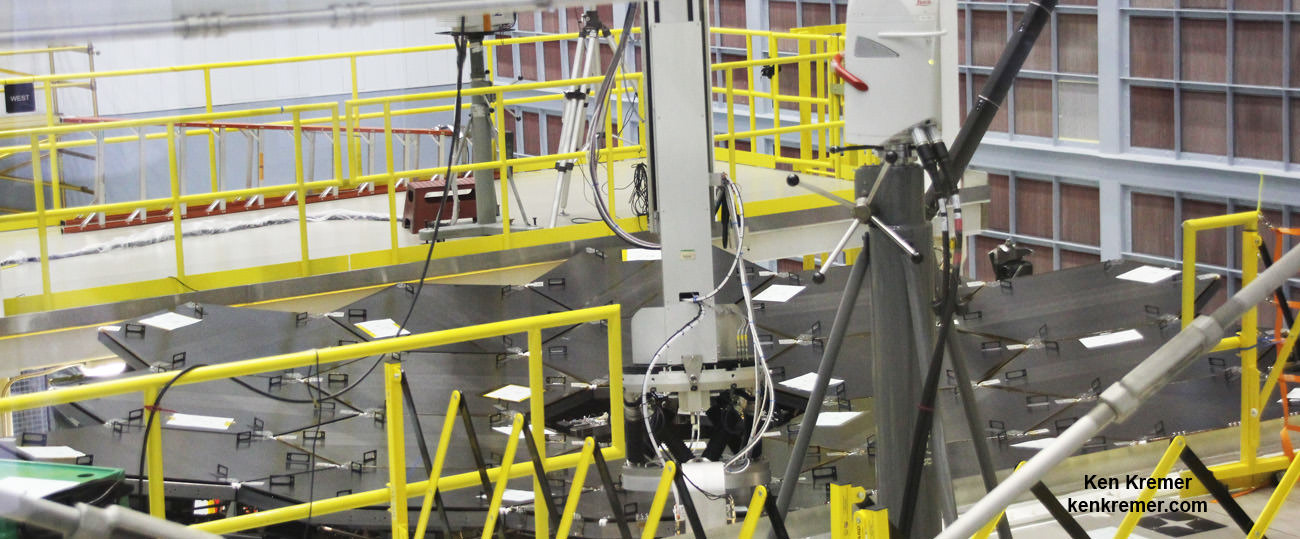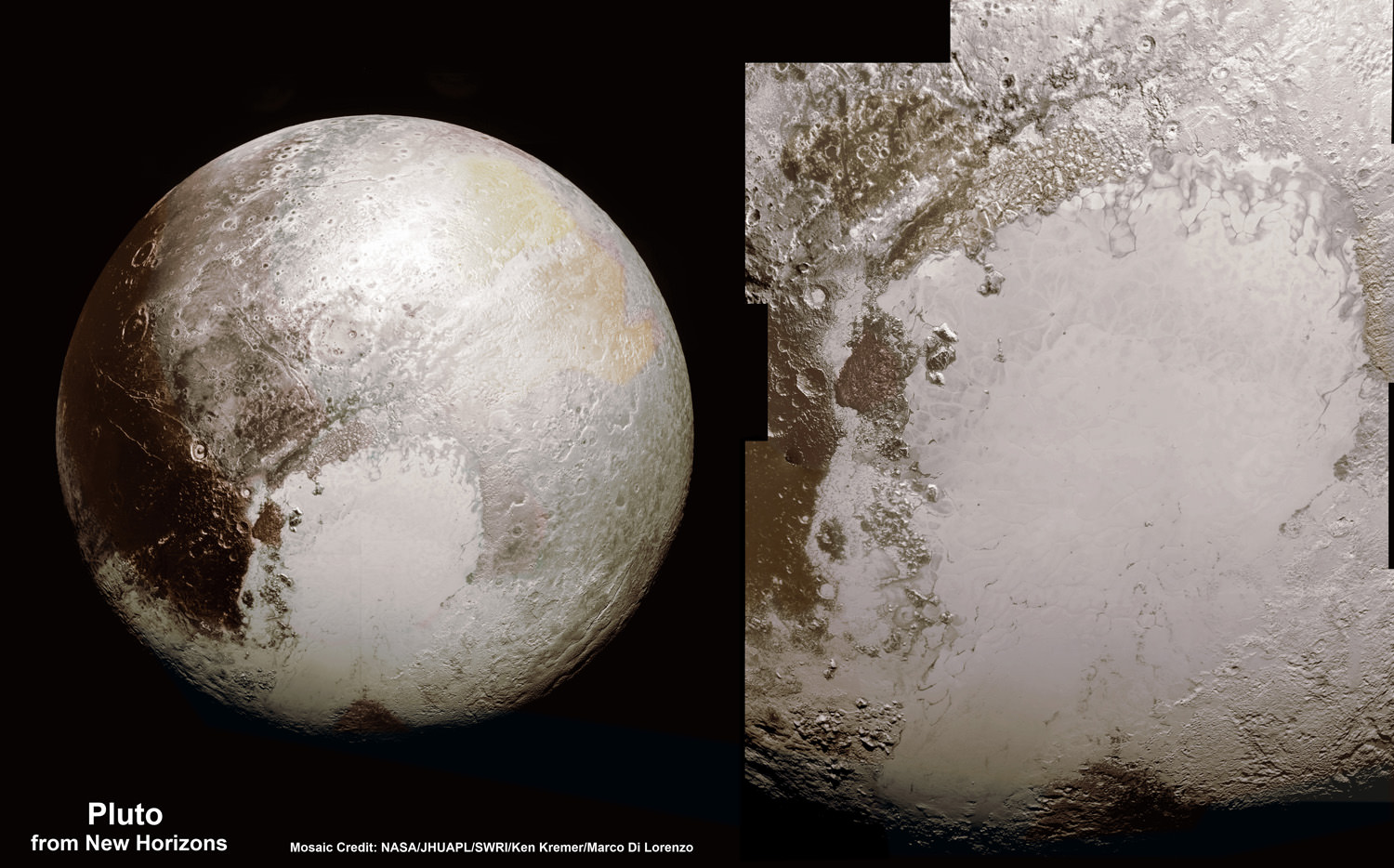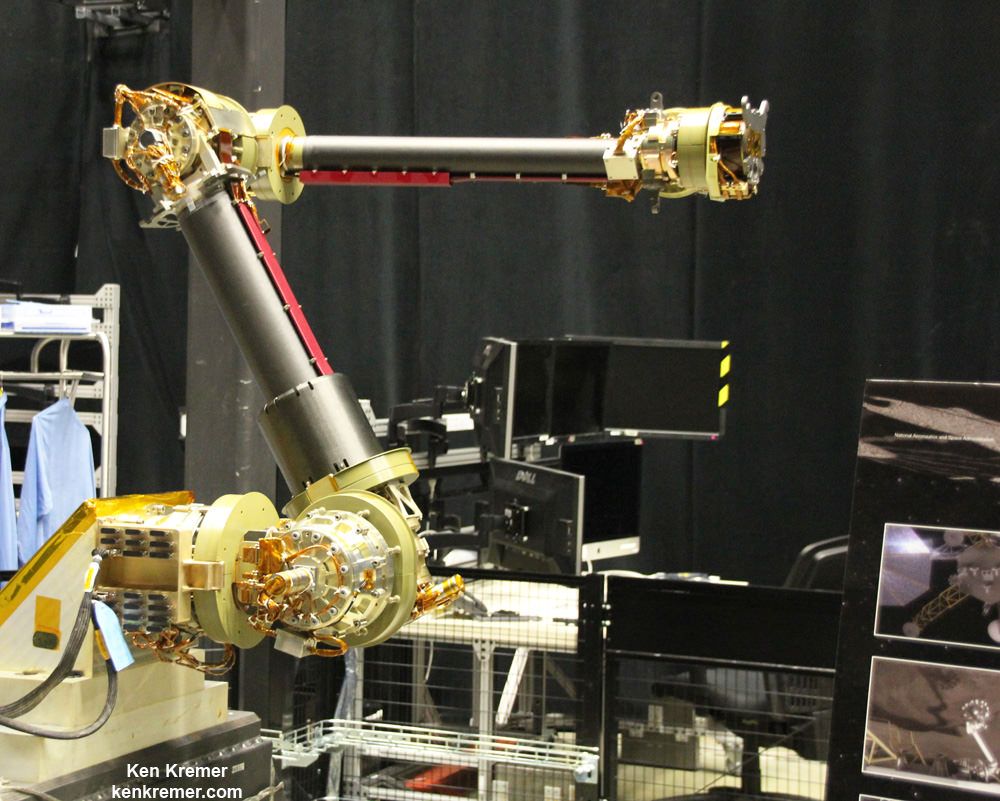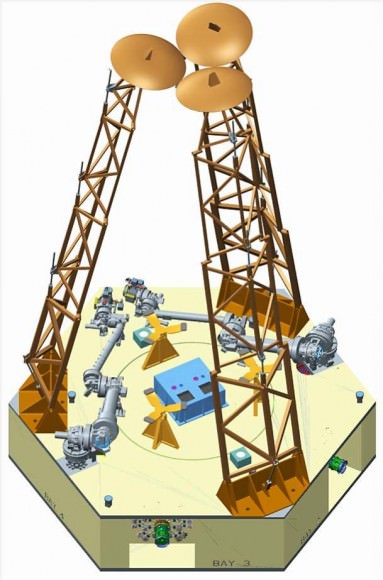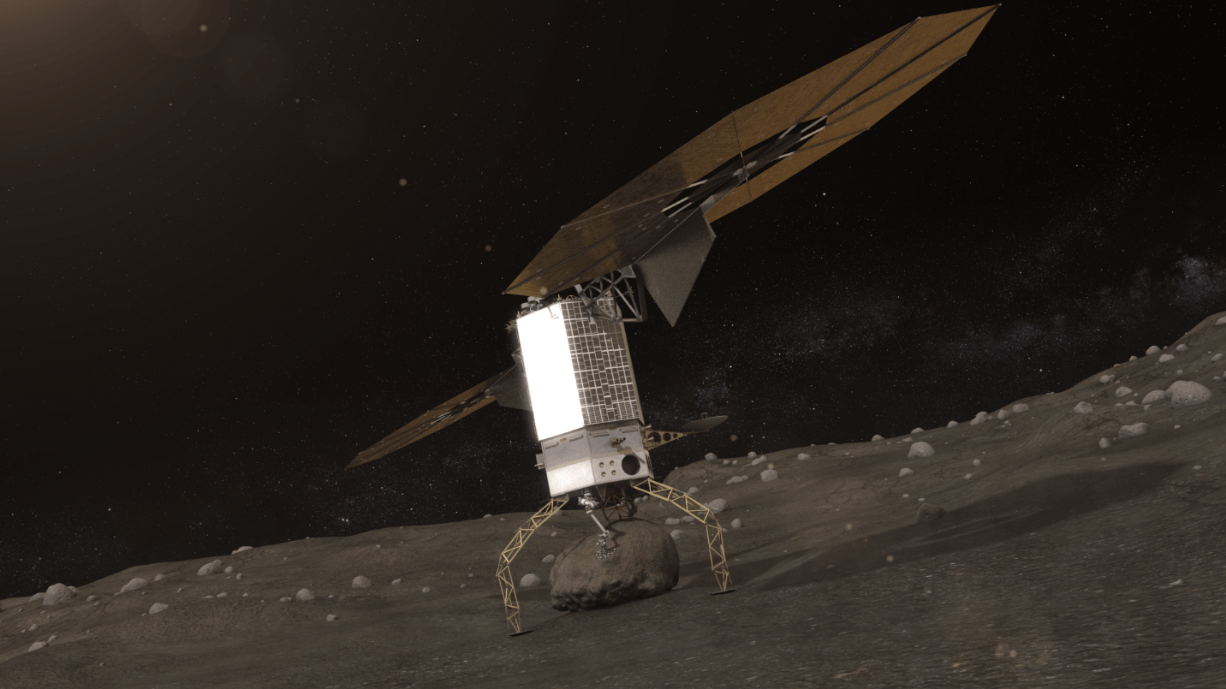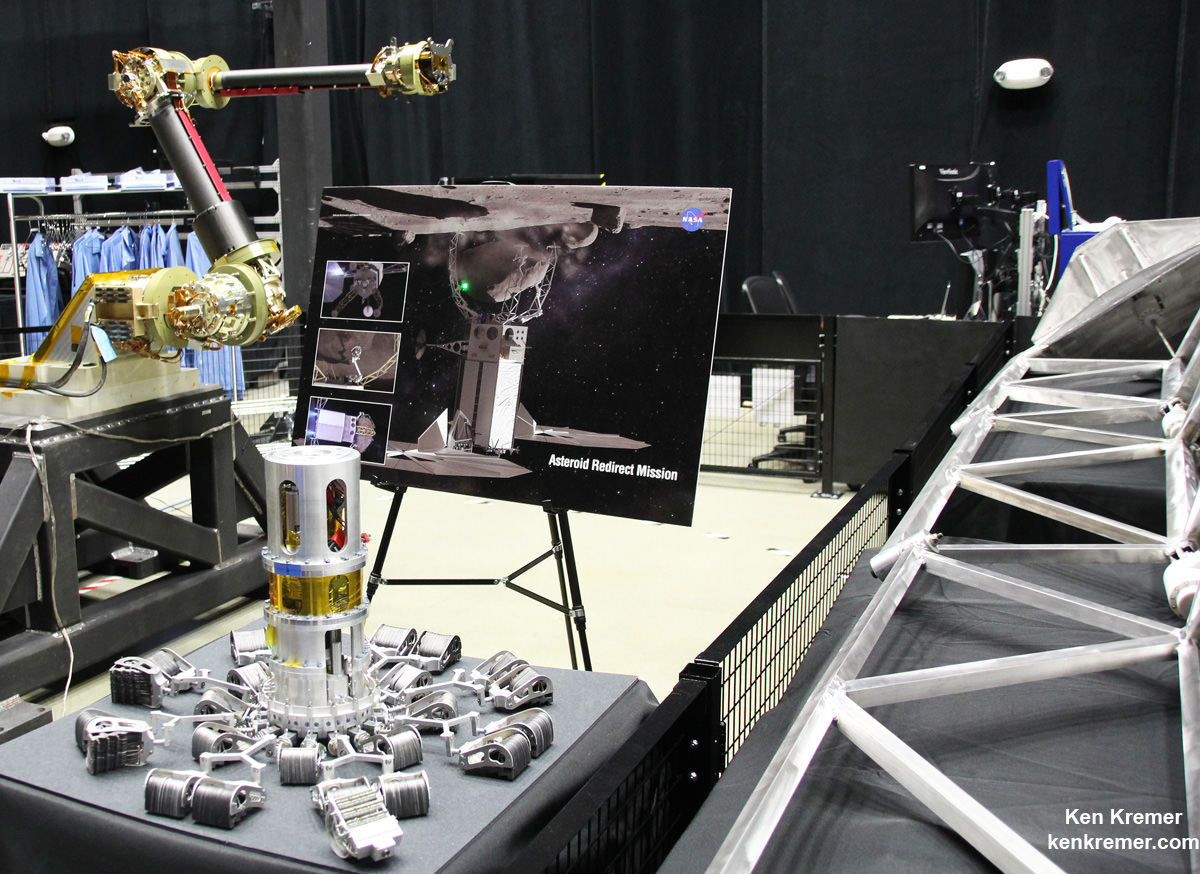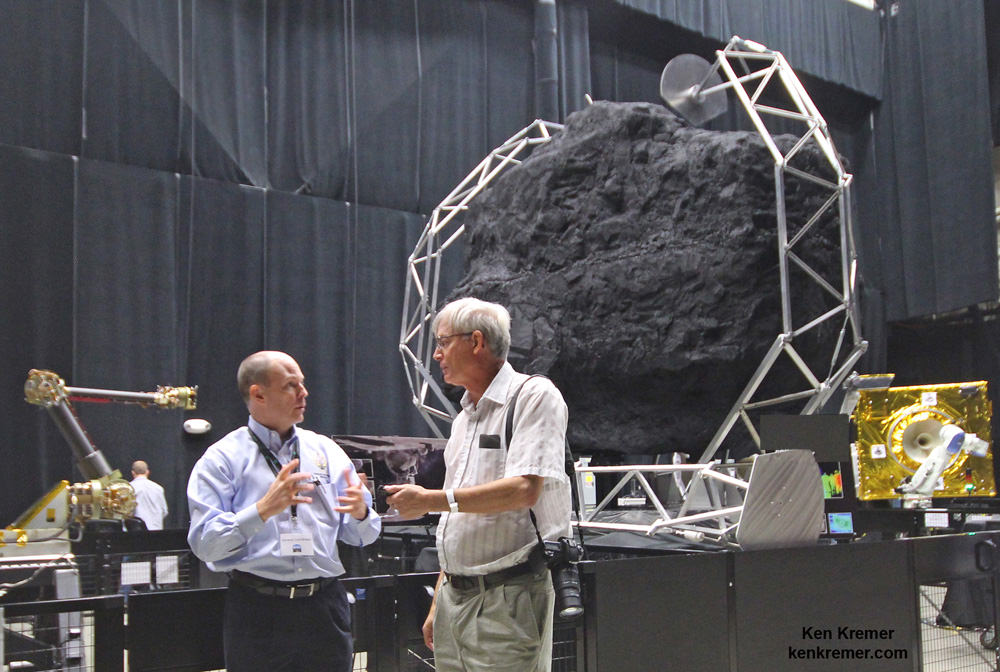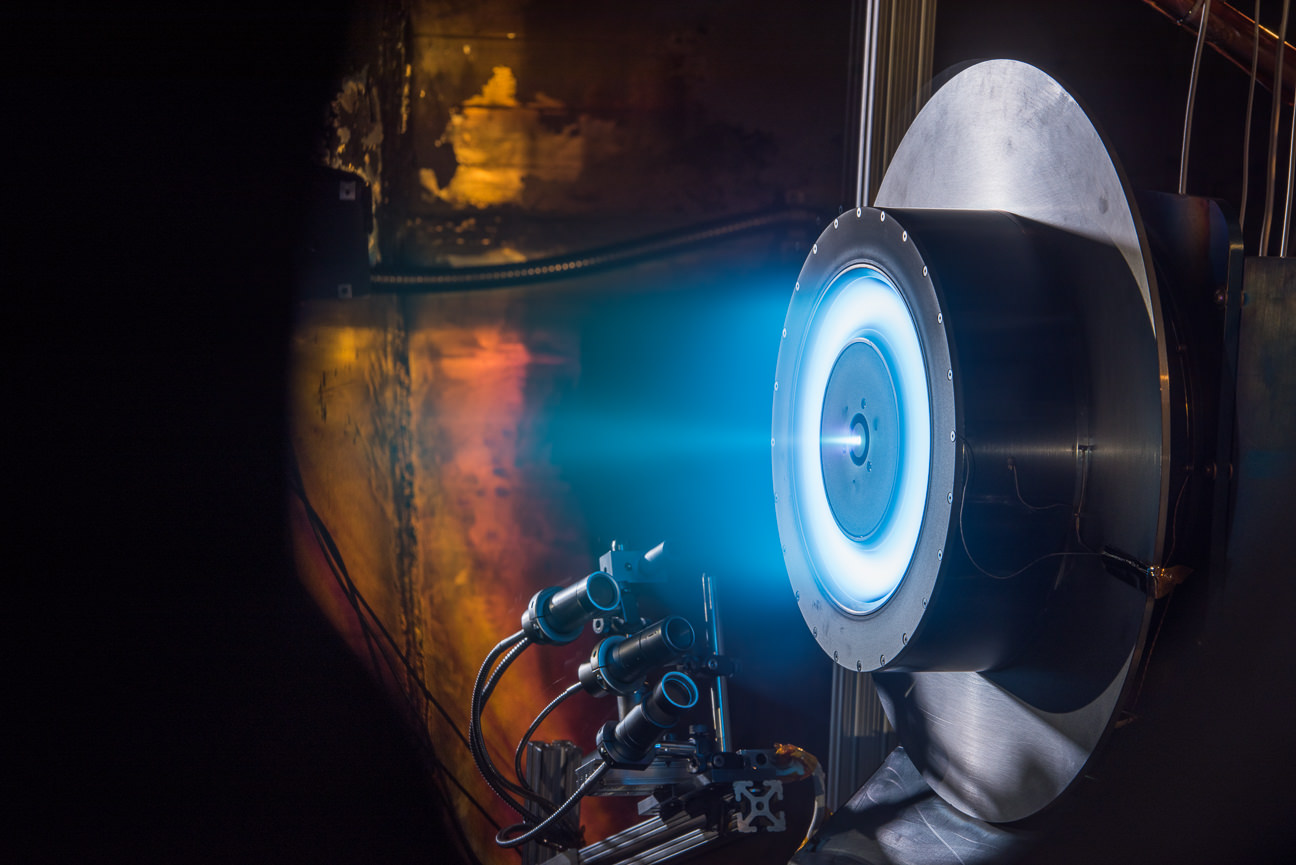
NASA has selected Aerojet Rocketdyne to design and develop an advanced solar electric propulsion (SEP) system that will serve as a critical enabling technology for sending humans and robots on deep space exploration missions to cislunar space, asteroids and the Red Planet.
Under the 3 year, $67 million contract award, Aerojet Rocketdyne will develop the engineering development unit for an Advanced Electric Propulsion System (AEPS) with the potential for follow on flight units.
NASA hopes that the work will result in a 10 fold increase in “spaceflight transportation fuel efficiency compared to current chemical propulsion technology and more than double thrust capability compared to current electric propulsion systems.”
The SEP effort is based in part on NASA’s exploratory work on Hall ion thrusters which trap electrons in a magnetic field and uses them to ionize and accelerate the onboard xenon gas propellant to produce thrust much more efficiently than chemical thrusters.
The solar electric propulsion (SEP) system technology will afford benefits both to America’s commercial space and scientific space exploration capabilities.
For NASA, the SEP technology can be applied for expeditions to deep space such as NASA’s planned Asteroid Robotic Redirect Mission (ARRM) to snatch a boulder from the surface of an asteroid and return it to cislunar space during the 2020s, as well as to carry out the agency’s ambitious plans to send humans on a ‘Journey to Mars’ during the 2030s.
“High power SEP is a perfect example of NASA developing cross cutting technologies to enable both human and robotic deep space missions. Basically it enables high efficiency and better gas mileage,” said Steve Jurczyk, associate administrator of NASA’s Space Technology Mission Directorate (STMD) in Washington, at a media briefing.
“The advantage here is the higher power and the higher thrust.”
“Our plan right now is to flight test the higher power solar electric propulsion that Aerojet Rocketdyne will develop for us on the Asteroid Redirect Robotic Mission (ARRM), which is going to go out to an asteroid with a robotic system, grab a boulder off of an asteroid, and bring it back to a lunar orbit.”
ARRM would launch around 2020 or 2021. Astronauts would blast off several years later in NASA’s Orion crew capsule in 2025 after the robotic probes travels back to lunar orbit.
For industry, electric propulsion is used increasingly to maneuver thrusters in Earth orbiting commercial satellites for station keeping in place of fuel.
“Through this contract, NASA will be developing advanced electric propulsion elements for initial spaceflight applications, which will pave the way for an advanced solar electric propulsion demonstration mission by the end of the decade,” says Jurczyk.
“Development of this technology will advance our future in-space transportation capability for a variety of NASA deep space human and robotic exploration missions, as well as private commercial space missions.”
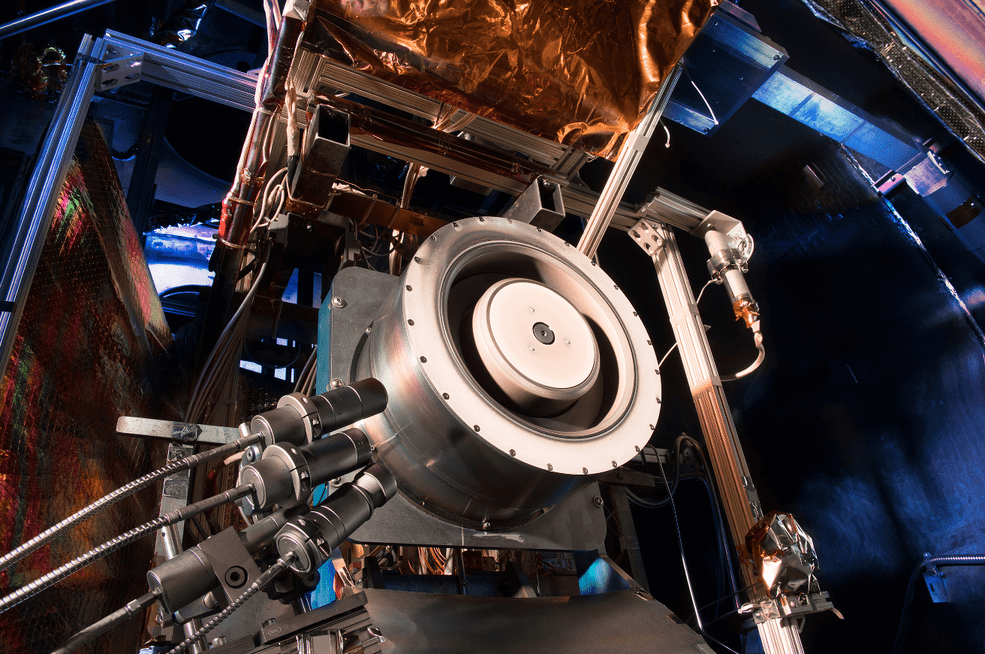
“This is also a critical capability for enabling human missions to Mars, with respect to delivering cargo to the surface to Mars that will allow people to live and work there on the surface. Also for combined chemical and SEP systems on a spacecraft to propel humans to Mars,” elaborated Jurczyk at the briefing.
“Another application is round trip robotic science missions to Mars to bring back samples – such as a Mars Sample Return (MSR) mission.”
The starting point is NASA’s development and technology readiness testing of a prototype 13-kilowatt Hall thruster and power processing unit at NASA’s Glenn Research Center in Cleveland.
Under the contract award Aerojet Rocketdyne aims to carry out the industrial development of “high-power solar electric propulsion into a flight-qualified system.”
They will develop, build, test and deliver “an integrated electric propulsion system consisting of a thruster, power processing unit (PPU), low-pressure xenon flow controller, and electrical harness,” as an engineering development unit.
This engineering development unit serves as the basis for producing commercial flight units.
If successful, NASA has an option to purchase up to four integrated flight units for actual space missions. Engineers from NASA Glenn and the Jet Propulsion Laboratory (JPL) will provide technical support.
“We could string together four of these engine units to get approximately 50 kilowatts of electrical propulsion capability and with that we can do significant orbital transfer operations. That then becomes the next step in deep space exploration operations that we are trying to do,” said Bryan Smith, director of the Space Flight Systems Directorate at NASA’s Glenn Research Center in Cleveland, at the media briefing.
“We hope to buy four of these units for the ARRM mission.”
What were some of NASA’s research and development (R&D) activities and further plans for Aerojet Rocketdyne?
“NASA is driving out the technology itself for feasibility. So we produced a developmental device to operate at these levels,” Smith told Universe Today during the briefing.
“Other key characteristics we were looking for is the ability to do magnetic shielding. The purpose was to allow for a long life thruster operation. We investigated attributes like thermal problems and balancing the erosion mechanisms in developmental units. So we were looking for things to get longer life and feasibility in developmental units.”
“Once we were comfortable with the feasibility in developmental units, we are now transferring the information, technology and knowhow into what is a production article, in this contract.”
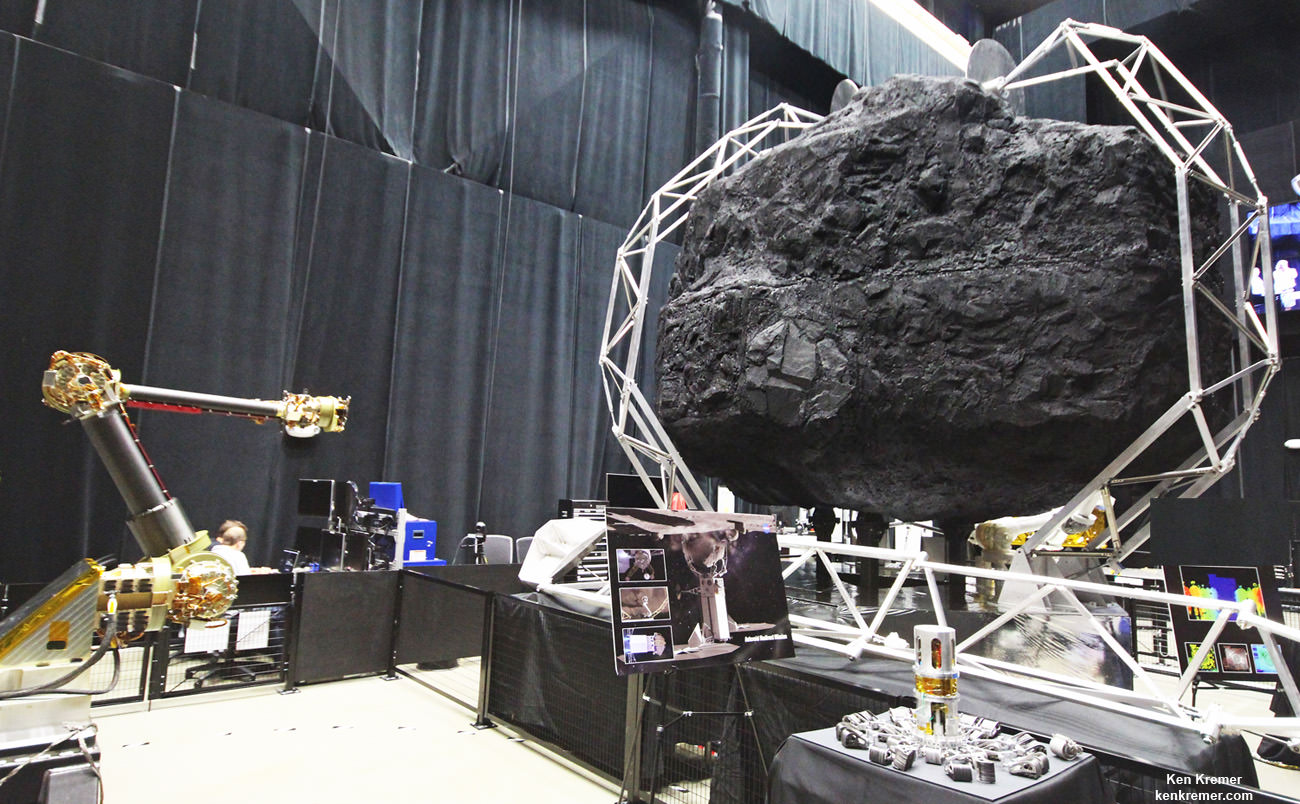
Solar electric ion propulsion is already being used in NASA’s hugely successful Dawn asteroid orbiter mission.
Dawn was launched in 2007. It orbited and surveyed Vesta in 2011 and 2012 and then traveled outward to Ceres.
Dawn arrived at dwarf planet Ceres in March 2015 and is currently conducting breakthrough science at its lowest planned science mapping orbit.
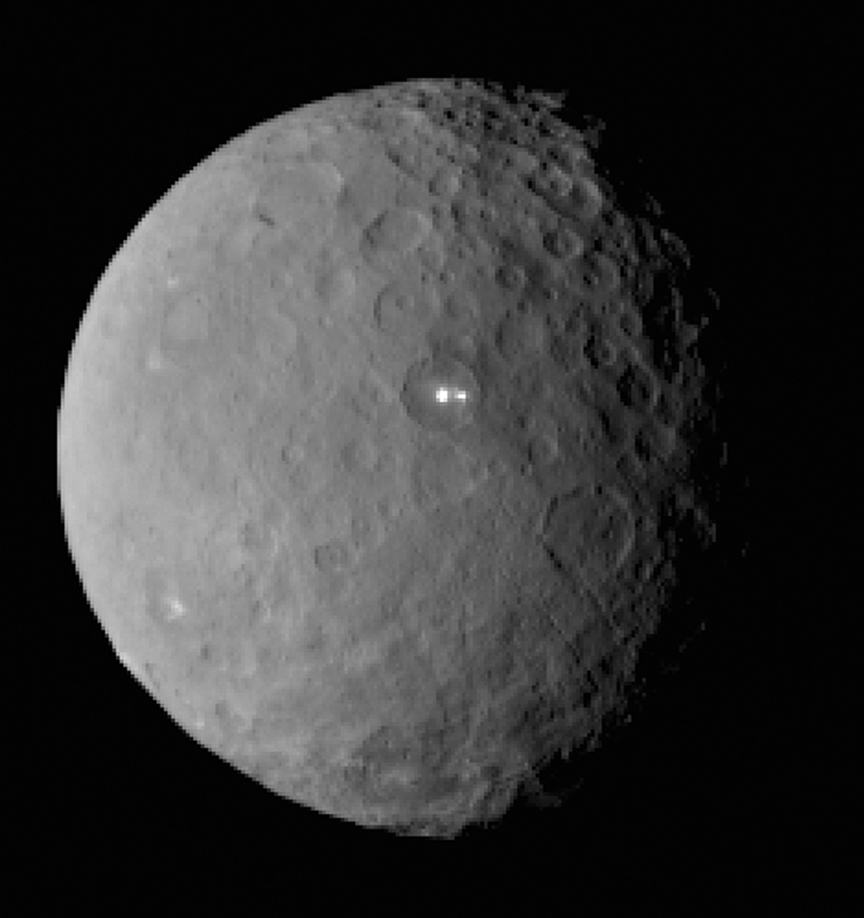
A key part of the Journey to Mars, NASA will be sending cargo missions to the Red Planet to pave the way for human expeditions with the Orion crew module and Space Launch System.
Aerojet Rocketdyne states that “Solar Electric Propulsion (SEP) systems have demonstrated the ability to reduce the mission cost for NASA Human Exploration cargo missions by more than 50 percent through the use of existing flight-proven SEP systems.”
“Using a SEP tug for cargo delivery, combined with NASA’s Space Launch System and the Orion crew module, provides an affordable path for deep space exploration,” said Aerojet Rocketdyne Vice President, Space and Launch Systems, Julie Van Kleeck.
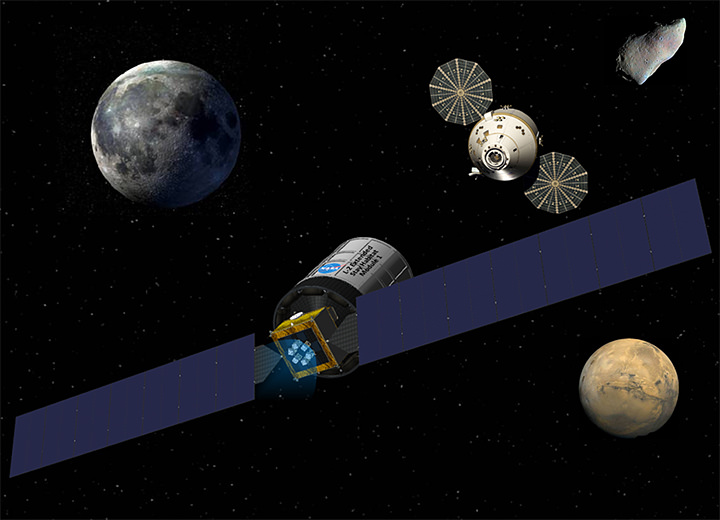
Another near term application of high power solar electric propulsion could be for NASA’s proposed Mars 2022 telecom orbiter, said Smith at the media briefing.
Other NASA technology work in progress includes development of more efficient, advanced solar array systems to generate the additional power required for the larger electric thrusters.
Orbital ATK was part of the development effort and already used some of its technology development in the ultraflex solar arrays on the recent Cygnus cargo ships delivering supplies to the ISS.
Stay tuned here for Ken’s continuing Earth and planetary science and human spaceflight news.

